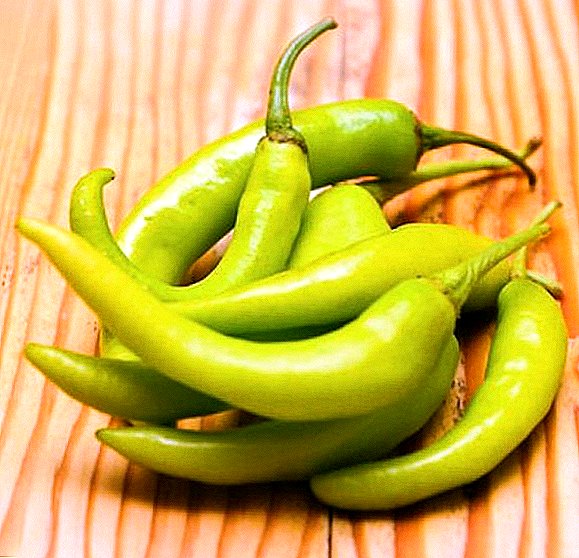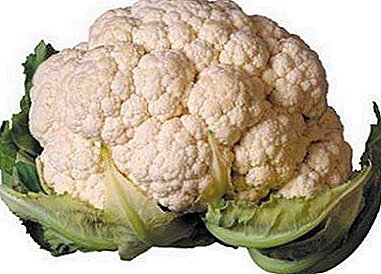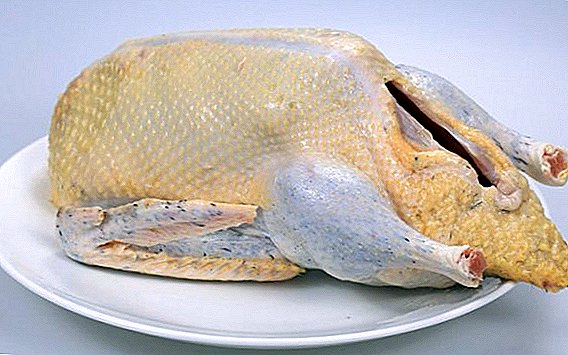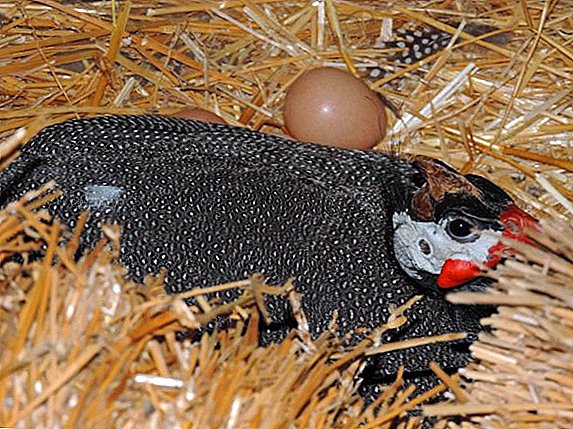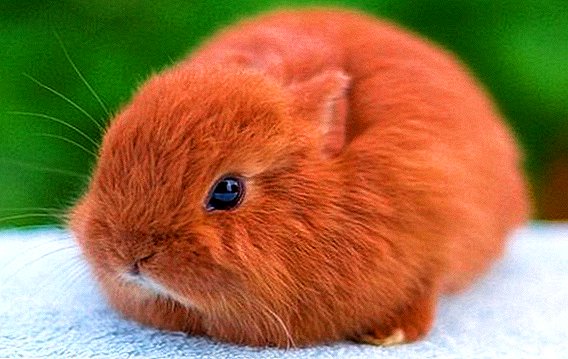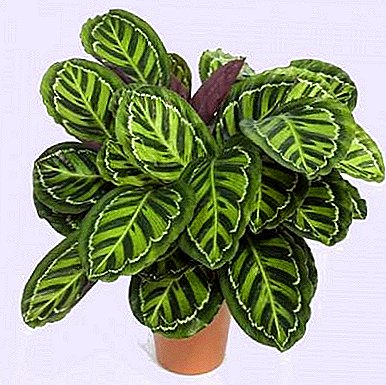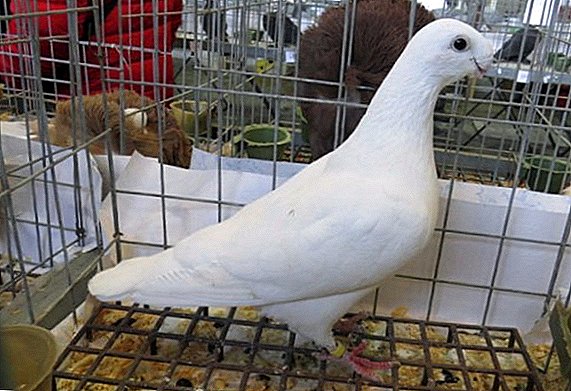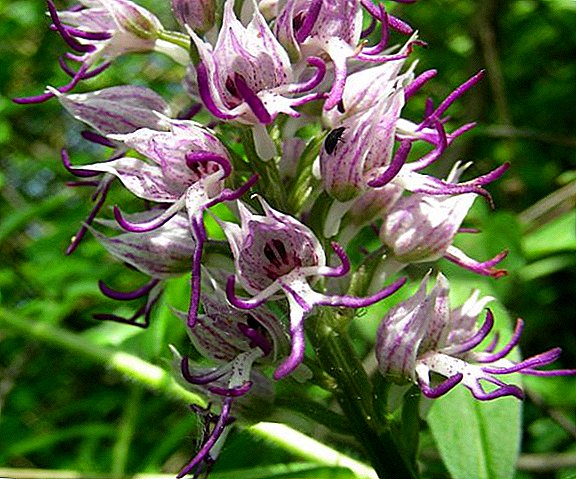 This article focuses on the plant, which strikes the imagination with its rare beauty. It is used in traditional medicine, as well as to decorate the garden. It will be a monkey orchid, the buds of which resemble a primate's face. Consider the use of grass, as well as growing at home.
This article focuses on the plant, which strikes the imagination with its rare beauty. It is used in traditional medicine, as well as to decorate the garden. It will be a monkey orchid, the buds of which resemble a primate's face. Consider the use of grass, as well as growing at home.
What a monkey orchid looks like: description and photo
The monkey orchid is a perennial grass that belongs to the Orchid family, that is, it is a distant relative of the orchid. The height of an erect stem varies from 20 to 45 cm. It forms from 3 to 5 elongated leaf plates of dark green color, which are 10-15 cm long and up to 5 cm wide. The leaves are oblong-lanceolate, tapered towards the base.  The inflorescence is formed from small buds, painted in shades of pink or purple. In shape, they remotely resemble cockerels. The length of the inflorescence is 3-8 cm. It blooms in June-July, after flowering, the buds dry out and the formed seeds fall to the ground. The root system is an egg-shaped tuber of a small size.
The inflorescence is formed from small buds, painted in shades of pink or purple. In shape, they remotely resemble cockerels. The length of the inflorescence is 3-8 cm. It blooms in June-July, after flowering, the buds dry out and the formed seeds fall to the ground. The root system is an egg-shaped tuber of a small size.
Where does wild orchid grow?
Consider the distribution area and the status of the plant.
The Orchid family includes plants such as miltonia, cymbidium, cattleya, dendrobium, cambria, and ludisia.
Distribution and ecology
It grows in well-lit forests, as well as in open areas. It prefers lowlands, therefore it does not grow in mountain ranges, which are higher than 1.5 km above sea level. It is found on the territory of Southern and Western Europe, as well as in the CIS countries. It grows in North Africa, as well as in Iran and nearby countries. It is found in Dagestan, in the Caucasus and in Turkmenistan. Grows singly or in pairs.
Security status
Orchis is listed in the Red Book of the Russian Federation (3rd section, a rare species). Following this, its harvesting or destruction due to the development of the site of distribution or logging is prohibited. In some CIS countries, the species is considered to be close to destruction, therefore, it is protected by the state.
Read also about such unusual flowers as sundew, hauttuynia, passionflower, nepenthes, hoya, vallota, camellia and amorphophallus.
The composition and use of plants
Chemical composition of tubers:
- mucus - 50%;
- starch - 25%;
- dextrin;
- sucrose;
- pentosans.
 The leaves and stem of the plant are not used, therefore they are of no value.
The leaves and stem of the plant are not used, therefore they are of no value.Where apply
Since the orchis during flowering throws large inflorescences of a bizarre shape, it is planted on the backyard plots as an ornamental plant, forming alpine slides. It not only pleases the eye in the summer, but can also be used for medicinal purposes.
The gastrointestinal tract is also well influenced by onion-slizun, Kale cabbage, watercress, meadow sage, gooseberry, dodder, chervil, prince and double-leaved.In folk medicine, the orchid has established itself as a good lifesaver against poisoning and various diseases of the gastrointestinal tract. Salep is used as a medicinal product, it is a Turkish cuisine drink that is prepared on the basis of a powder of orchid tubers. Also, on the basis of tubers and dried buds make milk kissels, alcohol and oil tinctures.

Salep is used to treat the following ailments:
- cough of various strengths;
- inflammation of the larynx mucosa;
- diarrhea;
- hangover or alcohol poisoning;
- cystitis;
- inflammation of the appendages;
- prostatitis;
- impotence;
- ulcer;
- colitis;
- gastroenteritis.
Salep is a good national analogue of activated carbon, which allows using it to remove toxic substances from the body as soon as possible. Old tubers powder can be used as a contraceptive; however, its effectiveness as an oral contraceptive has not been proven experimentally.
Did you know? To produce 1 kg of salep flour, it is necessary to recycle the tubers from 1 thousand of orchid bushes.
How to harvest raw materials
Remember that the wild-growing variant is dangerous for a person, therefore his tubers cannot be harvested in any way. Also note that the sale of tubers and products for the salep sale is done by large companies that own plantations. From this it follows that it is prohibited to purchase tubers or powder in mass markets or from private individuals, since they cannot offer you a high-quality and safe product. Harvesting tubers involved immediately after flowering.  Only young tubers are dug up; old tubers are left in the ground or discarded. Then they are washed under running water, and then boiled for 5 minutes. This is followed by drying under a canopy in the fresh air. You can use special dryers, putting in them a temperature of not more than +55 ° C. After drying, the tubers are ready for long term storage. They are stored in small fabric bags, and then stored in low humidity. It is not recommended to grind products into powder immediately after drying, as it will pick up moisture faster and deteriorate.
Only young tubers are dug up; old tubers are left in the ground or discarded. Then they are washed under running water, and then boiled for 5 minutes. This is followed by drying under a canopy in the fresh air. You can use special dryers, putting in them a temperature of not more than +55 ° C. After drying, the tubers are ready for long term storage. They are stored in small fabric bags, and then stored in low humidity. It is not recommended to grind products into powder immediately after drying, as it will pick up moisture faster and deteriorate.
Important! The shelf life of properly dried roots is 6 years.
How to grow the orchid yourself at home
It is easy to grow the orchid in the garden plot, if all the necessary conditions for this plant are observed.
The orchid has blossomed: what to do with the arrow.
Correct place
In order for the plant to develop well and quickly increase its green mass, it must be planted in a place where the sun's rays hit the above-ground part only in the morning and evening hours, and at noon there is diffused light or partial shade. The medicinal plant prefers moist, but not swampy soil, therefore it is impossible to plant it on hills and lowlands.  Orchis is not suitable loamy or sandy soils for obvious reasons. Pay attention to the pH of the soil. Neutral or slightly acidic soil is suitable for orchids. You must also take care of the presence in the soil of minerals and nutrients, otherwise the grass will grow dwarf, which will affect the number and size of tubers.
Orchis is not suitable loamy or sandy soils for obvious reasons. Pay attention to the pH of the soil. Neutral or slightly acidic soil is suitable for orchids. You must also take care of the presence in the soil of minerals and nutrients, otherwise the grass will grow dwarf, which will affect the number and size of tubers.
Important! Orchis comes into symbiosis with a special type of mushroom that is picky about conditions. Aggressive wild herbs can quickly stifle planting.
Proper care
Watering. It is necessary to regularly check the moisture of the soil so that the grass does not experience a lack of water. If the ground becomes too dry, the orchid will hibernate, which is why you will not get valuable raw materials at the end of the season. Watering is carried out only if necessary, you do not need to regularly fill the grass.
Fertilization. To prevent the tubers from becoming “golden,” we recommend that you stop making expensive fertilizing, but rather stop on compost, humus or chopped needles. Fertilizers are used for mulching, laying a layer of 5-7 cm. Mulch is put in the spring and autumn, when the air temperature does not fall below 0 ° C. Avoid the use of nitrogen fertilizers, as they will negatively affect flowering, as a result of which the greenhouse may not bloom at all.  Transfer. A transplant is done in the fall or winter, before the tubers come out of hibernation. Not only underground organs are transferred to a new place, but also a small part of the land from an old bush. This is necessary so that the mushrooms, which form a symbiosis with the plant, “migrate” along with the tubers.
Transfer. A transplant is done in the fall or winter, before the tubers come out of hibernation. Not only underground organs are transferred to a new place, but also a small part of the land from an old bush. This is necessary so that the mushrooms, which form a symbiosis with the plant, “migrate” along with the tubers.
Orchid reproduction
Orchis can be propagated both by the seed method and by dividing the tubers. Consider the pros and cons of each option.
Seeds
Seeds are harvested after withering stalks. Then they are sorted and packed in paper bags. Sowing can be done at any time of the year, except for winter. This is due to the fact that the seed will germinate only at a certain temperature (+ 18 ... +24 ° C), and before warming it will simply be in the ground. Sowing is carried out on a shallow depth (1-2 cm). Loose fertile soil is used, the place is chosen well lit, partial shade or shadow does not fit.  Shoots are not uniform, moreover, neighboring plants can ascend with an interval of 1 month. For this reason, a picking to a permanent place is carried out on the basis of the development of a separate bush. When landing on a permanent place between neighboring plants, they maintain an interval of 10-15 cm. Sowing in open ground is practiced only in regions with a warm climate. In the northern part of the temperate zone, sowing is carried out in boxes with a further dive into separate pots.
Shoots are not uniform, moreover, neighboring plants can ascend with an interval of 1 month. For this reason, a picking to a permanent place is carried out on the basis of the development of a separate bush. When landing on a permanent place between neighboring plants, they maintain an interval of 10-15 cm. Sowing in open ground is practiced only in regions with a warm climate. In the northern part of the temperate zone, sowing is carried out in boxes with a further dive into separate pots.
Check out the useful hawthorn properties.
Root division
The process is similar to transplant. In the autumn, after trimming the green part, the replacement of the tuber root is produced. Then transplanted to a new place with a small part of the old soil. The depth of planting should be adjusted based on the depth of the parent plant.
Peculiarities of wintering monkey orchid
Immediately after falling stalks, the plant begins to prepare for winter. Its above-ground part turns yellow and dries, after which the tubers hibernate. In order not to risk, it is better to cut off all the greens immediately after collecting the products, giving the underground bodies plenty of time to prepare for the cold weather. You should also take care that in the fall there was no flooding of the site. Tubers are not affected by fungus or bacteria, but may rot due to high humidity. 
Did you know? The Persian army during the campaigns could go without food, using only salep and clean water. This is due to the fact that the drink based on tubers gives a lot of energy, preventing the depletion of the body.Orchis monkey is a valuable plant, but because of this in nature there are not many wild-growing variations that are protected. Purchase planting material and finished products only from trusted people to avoid cheating.


